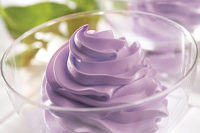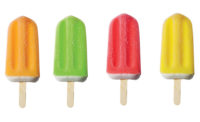Caramel Colors in Dairy Applications |
|
When it comes to dairy, caramel colors have a lot going for them. For starters, FDA exempts all four classes of caramel color — each with its own features and functionalities, from acid stability to color delivered per unit — from certification, which means none gets tagged with its own FD&C number. Even Whole Foods accepts all four classes of caramel color in products it carries, though it prefers those in class I, which are produced via heat instead of chemical reaction. Next is the color’s stability in dairy media. Almost unique among exempt colorants, caramel tolerates a range of pH conditions, heat treatments and processing environments almost as broad as what you’d get with certified colorants. While caramel colorants can be sensitive to strong acids — say, phosphoric acid in cola — they stand up handily to the organic acids in dairy, even yogurt. David Tuescher, lab director, Sethness Products Co., Lincolnwood, Ill., said that caramel colors are highly soluble in dairy emulsions. “So if you have a water-based emulsion you can use pretty much any caramel color you want.” And while caramel color may not automatically come to mind when you think of the dairy case with its berry smoothies and orange cheese spreads, the shades it can produce are ideal for some dairy favorites. Consider eggnog. “At very low concentrations” — around 0.01% — “all caramel colors will appear yellow,” Tuescher said. “As you increase the concentration, you get to the reds and then top out at the browns” at roughly 1%. That opens opportunities in items like coffee ice cream, mocha beverages and even certain chocolate-flavored items. And with all eyes on the bottom line, manufacturers may take any help with chocolate they can get. “Because of the price of cocoa getting to be very expensive,” said Terry L. Geerts, application chemist at Sethness, “we’ve done a lot of applications involving reduction of the cocoa in chocolate milk.” Caramel color, it turns out, helps keep that chocolatey color strong. But working with a savvy supplier is essential. As Tuescher said, “We have so many different variations of caramel color that you really have to know what the application is in the end when you’re designing the product.” |
Formulating natural colors in dairy foods
Consumer awareness of natural colorings in dairy foods is important. But coloring milk and dairy foods is a tricky proposition. Never fear. We look at red, yellow, blue and green color options for milk, cheese, yogurt and ice cream.

Color manufacturers are fast at work formulating naturally sourced colorants that can stand up to the chemistry, processing conditions and shelf-life demands of dairy.

Even indulgences like ice cream benefit from dairy's inherently healthy halo, and that makes "natural" (or, strictly speaking, "exempt") colorants a natural fit for formulation.

The popularity of yogurt (which wears a healthy halo) has driven dairy processors to search for equally healthy-sounding color ingredients derived from fruit and vegetable sources.


High-heat treatments like UHT, HTST and even good old-fashioned retorting can threaten some exempt colorants' stability, underscoring the importance of working with a colorant supplier to match ingredient choice to dairy application.

